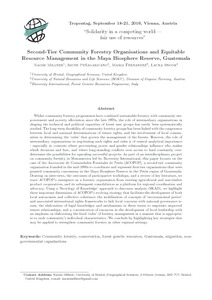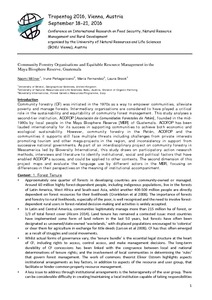Regeneration, growth and sustainability of mahogany in Mexico's Yucatan forests
Big-leaf mahogany was studied on nine mixed-species stands that became established naturally between 2 and 75 years ago after catastrophic disturbances (hurricane blowdown, fire, or bulldozer clearing). More than 50% of adult big-leaf mahogany trees had survived a severe hurricane, leaving 2.8 seed trees ha-1. After fire, 29% to 100% of adult Mahogany trees survived, leaving an average of 1.4 seed trees ha 1. Thirty or more years later, postdisturbance mahogany trees were found at densities of 18 ha-1 after fire, as compared to 6 ha-1 after a hurricane.



